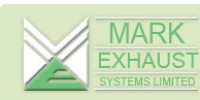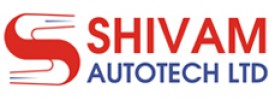
i
Hindustan Composites
Filter interviews by
Hindustan Composites Manager PPC Interview Questions and Answers
Hindustan Composites Manager PPC Interview Experiences
1 interview found
I applied via Naukri.com and was interviewed in Mar 2024. There was 1 interview round.
(2 Questions)
- Q1. What is process you handled
- Ans.
I have handled the process of optimizing PPC campaigns to improve ROI and drive conversions.
Conducting keyword research to identify high-performing keywords
Creating and testing ad copy to improve click-through rates
Monitoring campaign performance and making adjustments as needed
Utilizing A/B testing to optimize landing pages for better conversion rates
- Q2. What are major contribution from you in this organisation
- Ans.
I have significantly increased the ROI of PPC campaigns by implementing targeted strategies and optimizing ad performance.
Implemented targeted PPC strategies to reach specific audience segments
Optimized ad performance through A/B testing and keyword analysis
Increased ROI of PPC campaigns by X% within the first year
Introduced new ad formats and platforms to diversify campaign reach
Top trending discussions






Interview questions from similar companies

I applied via Naukri.com and was interviewed before Apr 2021. There were 2 interview rounds.

(2 Questions)
- Q1. Regarding subject related
- Q2. Electronics components testing
Interview Preparation Tips

I appeared for an interview in Feb 2025, where I was asked the following questions.
- Q1. How r u
- Ans.
I'm doing well, thank you! Excited about this opportunity and eager to learn and contribute to the team.
Feeling motivated and ready to tackle new challenges.
Looking forward to gaining hands-on experience in the field.
Eager to collaborate with talented individuals and learn from them.
- Q2. What r u doing
- Ans.
I am currently engaged in various activities, including studying, working on projects, and preparing for my upcoming internship.
Studying relevant subjects like programming and data analysis.
Working on personal projects to enhance my skills, such as building a website.
Participating in online courses to learn new technologies.
Networking with professionals in my field to gain insights and advice.

Assistant Manager Interview Questions & Answers
India Nippon Electricalsposted on 26 Aug 2022
I applied via Recruitment Consulltant and was interviewed in Mar 2022. There were 3 interview rounds.

(1 Question)
- Q1. Basic information about Electronic Sourcing & suppliers for active and passive components
(1 Question)
- Q1. About sourcing process in details. Questions about new product development.
Interview Preparation Tips

I applied via Walk-in and was interviewed in May 2022. There were 4 interview rounds.

(3 Questions)
- Q1. Production related questions
- Q2. Working flow rated questions
- Q3. Any other factory related
(1 Question)
- Q1. Salary related questions

Interview Preparation Tips

Senior Engineer Interview Questions & Answers
India Nippon Electricalsposted on 16 Apr 2024
I applied via Naukri.com and was interviewed before Apr 2023. There were 2 interview rounds.
(3 Questions)
- Q1. Details about previous employment
- Q2. Roles and responsibilities
- Q3. Tell me about yourself
(2 Questions)
- Q1. OLE / OEE, CNC programming
- Q2. Manpower handling


(1 Question)
- Q1. Hr after technical after plant head & president
(1 Question)
- Q1. Process & experience relative question
Interview Preparation Tips

I applied via Recruitment Consultant and was interviewed in Feb 2021. There were 3 interview rounds.
Interview Questionnaire
2 Questions
- Q1. How to close customers complaints.
- Ans.
To close customer complaints, actively listen to their concerns, empathize with their frustrations, offer a solution or compensation, and follow up to ensure satisfaction.
Listen attentively to the customer's complaint
Empathize with their frustrations and acknowledge their feelings
Offer a solution or compensation to resolve the issue
Follow up with the customer to ensure their satisfaction
- Q2. How to resolve the issue.
- Ans.
To resolve the issue, identify the root cause, develop a plan, and implement solutions.
Identify the root cause of the issue
Develop a plan to address the issue
Implement solutions based on the plan
Monitor and evaluate the effectiveness of the solutions
Make necessary adjustments if needed
Interview Preparation Tips

I applied via Naukri.com and was interviewed in Jul 2022. There were 3 interview rounds.

(2 Questions)
- Q1. About yourself, experience, job profile and role, marketing skill, reason of left the current job (company).
- Q2. As above which is mentioned
(2 Questions)
- Q1. About yourself, about previous job, reason of left last company, and about some knowledge regarding products.
- Q2. As above which is mentioned
Interview Preparation Tips

I applied via LinkedIn and was interviewed in Mar 2021. There were 3 interview rounds.
Interview Questionnaire
2 Questions
- Q1. Tell me something about yourself
- Q2. Share your jobs roles and responsibilities
Interview Preparation Tips
Hindustan Composites Interview FAQs
Tell us how to improve this page.
Interview Questions for Popular Designations
- PPC Engineer Interview Questions
- Assistant Manager PPC Interview Questions
- Production Manager Interview Questions
- Senior Engineer PPC Interview Questions
- Quality Manager Interview Questions
- Maintenance Manager Interview Questions
- Senior Executive PPC Interview Questions
- Assistant Manager Maintenance Interview Questions
- Show more
Hindustan Composites Manager PPC Interview Process
based on 1 interview
Interview experience
Interview Questions from Similar Companies
|
Sales Officer
13
salaries
| ₹2.4 L/yr - ₹4 L/yr |
|
Assistant Manager
10
salaries
| ₹6.2 L/yr - ₹11 L/yr |
|
Area Sales Manager
9
salaries
| ₹4.2 L/yr - ₹8.5 L/yr |
|
Production Engineer
8
salaries
| ₹1.5 L/yr - ₹2.4 L/yr |
|
Maintenance Officer
8
salaries
| ₹5 L/yr - ₹5 L/yr |

Greaves Cotton

Goodyear

Shivam Autotech

Fiem Industries
- Home >
- Interviews >
- Hindustan Composites Interview Questions >
- Hindustan Composites Manager PPC Interview Questions







